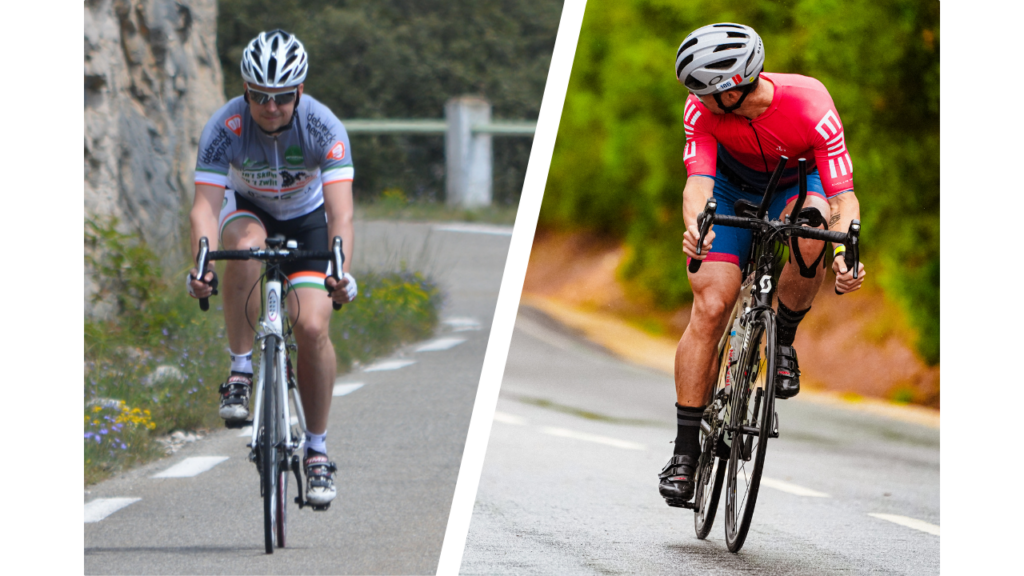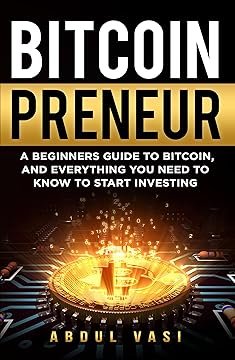Advertisement:
With over 25 years of experience as a business consultant, Abdul Vasi has helped countless brands grow and thrive. As a successful entrepreneur, tech expert, and published author, Abdul knows what it takes to succeed in today’s competitive market.
Whether you’re looking to refine your strategy, boost your brand, or drive real growth, Abdul provides tailored solutions to meet your unique needs.
Get started today and enjoy a 20% discount on your first package! Let’s work together to take your business to the next level!
It was one of those lazy Sunday afternoons. The sun was out, but not too harsh. The birds chirped in the background, and a gentle breeze swayed the trees in my backyard. I was seated in my usual spot on the porch, sipping my evening tea, lost in thought. I wasn’t thinking about anything in particular, just how time has this sneaky habit of speeding up when you’re not paying attention. That’s when it struck me—life, as unpredictable and wild as it is, often feels like a race. But here’s the catch: it’s not about speed. It’s about persistence. That age-old saying, “slow and steady wins the race,” had never resonated more clearly.
This brings me back to a story that had unfolded in my life not too long ago—a simple yet profound reminder that patience and perseverance, like little steps taken one at a time, make all the difference. It was the story of a man named Arjun.
Chapter 1: The Beginning of the Journey
Arjun was not the kind of guy who immediately stood out in a crowd. He wasn’t the fastest, the smartest, or the most charismatic. What he was, though, was consistent. Arjun was a firm believer in the idea that hard work pays off, even if it takes time. But here’s the thing, he hadn’t always been like this.
In fact, there was a time when Arjun was like many of us—impatient, anxious, and always in a hurry to achieve success. He lived life in fast-forward, always chasing the next big thing, never content with the present. He had big dreams, aspirations to climb the corporate ladder and make it to the top. The problem was, he wanted it to happen overnight.
I first met Arjun during a project we were working on together. We were part of a small team tasked with developing a new software solution for a client. Everyone on the team had different strengths. Some were excellent at coding, others were great at designing interfaces, but Arjun—he was different. He wasn’t the fastest coder, nor did he have the most innovative ideas. But what he lacked in speed, he made up for in persistence.
I remember him staying late at work, slowly but steadily plugging away at the problem at hand. While some of us would take breaks or get frustrated when things didn’t go as planned, Arjun would quietly continue, taking one small step after another. It wasn’t flashy, but it was effective.
At the time, I didn’t understand his approach. I, too, was caught up in the idea that success had to come quickly or not at all. But Arjun? He was the tortoise in a world full of hares, and he was about to teach us all an important lesson.
Chapter 2: The Setback
Life, as we all know, has a way of throwing curveballs when you least expect it. For Arjun, that curveball came in the form of a major setback.
It was around the time when our project was nearing completion. Everything seemed to be going smoothly until we hit a roadblock—a major bug in the system that none of us could figure out. Deadlines were approaching fast, and the pressure was mounting. The atmosphere in the office grew tense, with people staying late into the night, trying to fix the issue.
Frustration was at an all-time high. Some team members were ready to give up, some even suggested scrapping the entire project and starting over. But not Arjun. He kept his head down, working methodically to isolate the problem. While the rest of us panicked, he remained calm, taking things one step at a time.
It was a slow process. Days turned into nights, and still, there was no solution in sight. But Arjun didn’t give up. Every day, he made a little progress, even if it wasn’t visible to the rest of us. He understood that success doesn’t come in giant leaps, but in small, consistent steps.
I remember one evening, sitting next to him as we both stared at the screen, exhausted and drained. I turned to him and asked, “How do you stay so calm? Aren’t you worried that we won’t make it in time?”
He smiled, took a deep breath, and said, “One step at a time, my friend. That’s all we can do.”
It sounded so simple, yet so profound. Arjun understood something that the rest of us didn’t—rushing only leads to mistakes. By focusing on the task at hand and breaking it down into smaller, more manageable pieces, he was able to make steady progress, even when the situation seemed hopeless.
Chapter 3: The Breakthrough
It was on a particularly quiet night, after weeks of grueling work, that the breakthrough finally came.
Arjun had been working late, as usual, quietly tapping away at his keyboard, when suddenly, the bug was gone. Just like that. The solution, which had seemed so elusive for weeks, had finally revealed itself. It wasn’t a sudden stroke of genius or a miraculous discovery. It was the result of countless hours of slow, steady effort—one small step after another.
The rest of us, who had been caught up in the panic and frustration of the situation, were amazed. Arjun had done it, and he had done it by sticking to his methodical approach. He hadn’t rushed, he hadn’t panicked—he had simply taken things one step at a time, and in the end, it had paid off.
The project was completed on time, and our client was thrilled with the result. But more than the success of the project, it was the lesson we all took away from the experience that stayed with me.
Chapter 4: The Lesson
Life, as Arjun had shown us, isn’t about racing to the finish line. It’s about taking small, consistent steps toward your goal, even when the path seems unclear.
This lesson became even more evident to me in the months that followed. I started to notice how much time we waste by rushing through life, always in a hurry to get to the next thing. Whether it’s in our careers, relationships, or personal growth, we often feel the need to move quickly, thinking that success is only attainable if we get there fast.
But the truth is, the most meaningful progress is often made slowly, one step at a time.
Take the example of a seed. You plant it in the ground, water it, and wait. You don’t see any immediate results. Days go by, weeks even, and still, there’s no sign of growth. But underneath the surface, something is happening. The seed is slowly but steadily taking root, preparing to grow into something much bigger. It doesn’t happen overnight, but eventually, with time and patience, the seed becomes a plant, and the plant bears fruit.
Our lives are much like that seed. Success, growth, and personal achievement don’t happen in an instant. They take time, effort, and persistence. The key is to stay focused, keep taking small steps forward, and trust that, eventually, you’ll get there.
Chapter 5: Applying the Lesson
After working with Arjun and seeing the power of slow, steady progress firsthand, I started applying this mindset to different areas of my life. Whether it was a personal goal, a work-related task, or even a relationship, I began to approach things with more patience and persistence.
I realized that rushing rarely leads to lasting success. Instead, it often results in burnout, mistakes, and frustration. By taking things one step at a time, I was able to make consistent progress without feeling overwhelmed.
Take writing, for example. There was a time when I would try to write an entire blog post in one sitting, thinking that I needed to finish it quickly to be productive. But I soon realized that this approach only led to rushed, poorly thought-out content.
Now, I take a different approach. I break the writing process into smaller steps—outlining, drafting, revising, and editing. I take my time with each step, knowing that the final product will be much better if I don’t rush through it. And it works. The content is more polished, the ideas are clearer, and I feel less stressed.
The same applies to fitness. Instead of trying to achieve quick results through crash diets or intense workout routines, I focus on making small, sustainable changes to my lifestyle. I take things one day at a time, knowing that lasting results come from consistency, not from pushing myself too hard, too fast.
Chapter 6: The Tortoise and the Hare Revisited
As I reflect on Arjun’s story and the lesson of slow, steady progress, I can’t help but think of the famous fable of the tortoise and the hare. We’ve all heard the story—the overconfident hare races ahead, thinking he’s won, while the slow and steady tortoise quietly continues, one step at a time, until he eventually crosses the finish line first.
It’s a simple story, but its message is timeless. Success isn’t about speed; it’s about perseverance. The tortoise won the race not because he was the fastest, but because he kept going, even when the hare had given up.
In life, we are often tempted to be the hare—to rush ahead, thinking that speed is the key to success. But more often than not, it’s the tortoise who wins. It’s the people who are willing to take things one step at a time, who don’t get discouraged by setbacks, and who stay the course, who ultimately succeed.
Conclusion: One Step At A Time
As I sit here on my porch, finishing my tea, I think about how far I’ve come. It wasn’t always easy, and there were times when I wanted to
rush ahead, to force success to happen. But life doesn’t work that way. Progress, real progress, is made slowly, one step at a time.
So if you’re feeling overwhelmed by the challenges in your life, remember Arjun’s story. Remember the tortoise and the hare. And most importantly, remember that success doesn’t come from rushing—it comes from persistence.
One step at a time. Slow and steady wins the race.
I set down my empty cup, feeling a sense of calm wash over me. Sometimes, the simplest lessons are the most powerful. And in this fast-paced world, it’s good to be reminded that it’s okay to take things slow. After all, we’ll get there when we’re meant to—and the journey is just as important as the destination.




